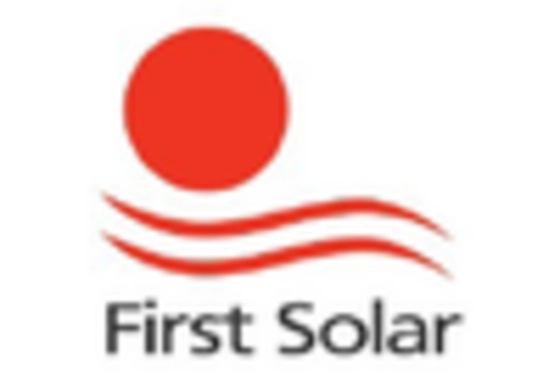Increasing Energy Demand
The Rooftop Solar Photovoltaic Market is experiencing a surge in energy demand, driven by urbanization and population growth. As more individuals and businesses seek reliable energy sources, the need for sustainable solutions becomes paramount. In recent years, energy consumption has risen significantly, with projections indicating a continued upward trend. This increasing demand for energy is compelling consumers to explore renewable options, particularly rooftop solar systems. These systems not only provide energy independence but also contribute to reducing carbon footprints. The Rooftop Solar Photovoltaic Market is thus positioned to benefit from this growing demand, as more households and commercial entities invest in solar technology to meet their energy needs.
Government Policies and Incentives
The Rooftop Solar Photovoltaic Market is significantly shaped by supportive government policies and incentives aimed at promoting renewable energy adoption. Various governments have implemented tax credits, rebates, and grants to encourage the installation of solar systems. These incentives not only reduce the initial financial burden on consumers but also enhance the overall attractiveness of solar investments. For instance, some regions offer feed-in tariffs that guarantee fixed payments for solar energy produced. Such policies are instrumental in driving the growth of the Rooftop Solar Photovoltaic Market, as they create a favorable environment for both residential and commercial solar projects. The alignment of government objectives with renewable energy goals further solidifies the market's potential.
Declining Costs of Solar Technology
The Rooftop Solar Photovoltaic Market is witnessing a notable decline in the costs associated with solar technology. Over the past decade, the price of solar panels has decreased dramatically, making them more accessible to a broader audience. According to recent data, the cost of solar photovoltaic systems has fallen by approximately 80% since 2010. This reduction in costs is attributed to advancements in manufacturing processes and economies of scale. As prices continue to decline, more consumers are likely to adopt rooftop solar solutions, further driving growth in the Rooftop Solar Photovoltaic Market. The affordability of solar technology is thus a critical driver, enabling both residential and commercial sectors to invest in renewable energy.
Environmental Awareness and Sustainability
The Rooftop Solar Photovoltaic Market is significantly influenced by the growing awareness of environmental issues and the push for sustainability. As climate change becomes an increasingly pressing concern, consumers are more inclined to adopt eco-friendly practices. The transition to renewable energy sources, such as solar power, is seen as a vital step in mitigating environmental impact. Surveys indicate that a substantial percentage of consumers prioritize sustainability when making energy choices. This heightened environmental consciousness is driving demand for rooftop solar installations, as individuals and businesses seek to align their energy consumption with their values. Consequently, the Rooftop Solar Photovoltaic Market is likely to see continued growth as sustainability becomes a central theme in energy consumption.
Technological Innovations in Energy Storage
The Rooftop Solar Photovoltaic Market is benefiting from advancements in energy storage technologies, which enhance the viability of solar energy systems. Innovations in battery storage solutions allow consumers to store excess energy generated during peak sunlight hours for use during non-sunny periods. This capability addresses one of the primary challenges associated with solar energy: intermittency. As energy storage technologies become more efficient and affordable, the appeal of rooftop solar systems increases. Data suggests that the integration of energy storage can significantly improve the return on investment for solar installations. Thus, the Rooftop Solar Photovoltaic Market is likely to experience accelerated growth as these technological innovations continue to evolve.


















Leave a Comment